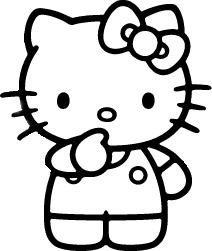21 April 2004
No Future
From Cute, by Kitty Hauser in the London Review of Books, Vol. 26 No. 8, April 15 2004.
“It is characteristic of subcultural style that it should resist the interpretations of outsiders. The signs emblazoned across the bodies of these Japanese teenagers speak in code to those who inhabit the same world of meaning; that, in one sense, is the point. But more than this, the broader ‘meaning’ of style is not something that can be read off its surface. If cute means anything, it isn’t going to be what it seems to mean. It isn’t, for example, necessarily juvenile to dress like a child. Nor does dressing up at the weekend necessarily betray a desire to be ‘someone else’. Most important, the deliberate dumbness of many of the youngsters in Fruits doesn’t necessarily mean they have nothing to say, or that they are saying nothing by acting dumb.
 Cute culture has thrown [Donald] Richie and other writers off track because it doesn’t conform to what the baby boomer generation expects of youth culture. Cute is not rebellious — at least not in any obvious way. It isn’t cool. It doesn’t seem to be about sex. It doesn’t want to overthrow capitalism — cute is hooked on brand-names. It is cosy, not angry. And despite the apparently unique get-ups in Fruits, it isn’t really about individuality: Richie points out with a triumphant air that the most outlandish sartorial affectations are widely copied, as if this were proof of a lack of imagination in this nation of conformists, rather than simply in the nature of subcultural style the world over. Cute is evidently rather disappointing and embarrassing to writers such as Alex Kerr, who, in Dogs and Demons (2001), sees it as one of many depressing symptoms of Japan’s decline. Whatever we might think of grown women in lacy ankle-socks and Barbie handbags or young men wearing tiny school uniforms, we ought to take them seriously, not least because cute culture is spreading. Sanrio, the company responsible for Hello Kitty, Little Twin Stars and a host of other cuties, has a billion-dollar turnover, much of it derived from the lucrative licensing of products from T-shirts to sex toys. These characters have a huge demographic appeal in many parts of the world, with or — increasingly — without the gloss of camp irony which justifies their consumption in some quarters. And it must mean something when large numbers of young people dress in ways which twenty years ago would have been considered more suitable for children.
Cute culture has thrown [Donald] Richie and other writers off track because it doesn’t conform to what the baby boomer generation expects of youth culture. Cute is not rebellious — at least not in any obvious way. It isn’t cool. It doesn’t seem to be about sex. It doesn’t want to overthrow capitalism — cute is hooked on brand-names. It is cosy, not angry. And despite the apparently unique get-ups in Fruits, it isn’t really about individuality: Richie points out with a triumphant air that the most outlandish sartorial affectations are widely copied, as if this were proof of a lack of imagination in this nation of conformists, rather than simply in the nature of subcultural style the world over. Cute is evidently rather disappointing and embarrassing to writers such as Alex Kerr, who, in Dogs and Demons (2001), sees it as one of many depressing symptoms of Japan’s decline. Whatever we might think of grown women in lacy ankle-socks and Barbie handbags or young men wearing tiny school uniforms, we ought to take them seriously, not least because cute culture is spreading. Sanrio, the company responsible for Hello Kitty, Little Twin Stars and a host of other cuties, has a billion-dollar turnover, much of it derived from the lucrative licensing of products from T-shirts to sex toys. These characters have a huge demographic appeal in many parts of the world, with or — increasingly — without the gloss of camp irony which justifies their consumption in some quarters. And it must mean something when large numbers of young people dress in ways which twenty years ago would have been considered more suitable for children.
Richie would have done well to read the work of Sharon Kinsella, whose writing on cute is free from the preconception that youth culture ought to be an authentic expression of individuality. On the contrary, according to Kinsella, cute style betrays a lack of confidence in the very notion of the individual, and cannot muster the energy and optimism necessary for rebellion. It is a soft revolt. It seems that becoming an adult is not an attractive option to these burikko (‘fake children’) when it is associated with the responsibilities and obligations of work and family. This is a generation of ’freeters’ (the word comes from ’free arbeiter’) who have rejected the stringent work patterns of their parents, even when they are available, as they often are not in the current economic climate. Acting and dressing like children represents their refusal of the adult world: as Kinsella writes, cute style ‘idolises the pre-social’. Cute is a kind of rebellion, then, but its retreat to the imagery of childhood indicates that there is no alternative to the adult world except a deliberate regression to this one remaining realm of freedom. Seen in this way, cute style is bleak: it allows no looking forward to a future, either for individuals or for society. In this sense it is far darker than punk, which had an energy and rage that promised action, if not social change. Cute disguises its pessimism and political inertia as winsomeness.”

